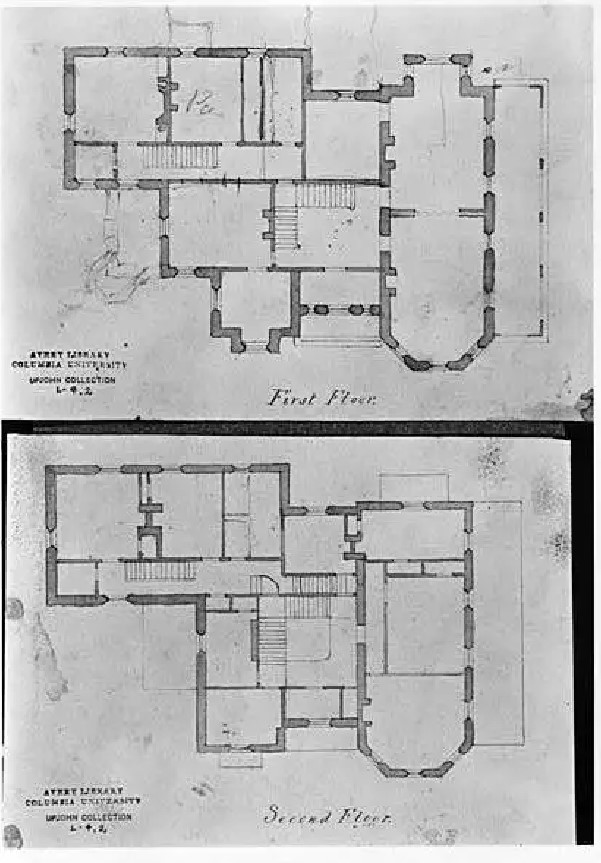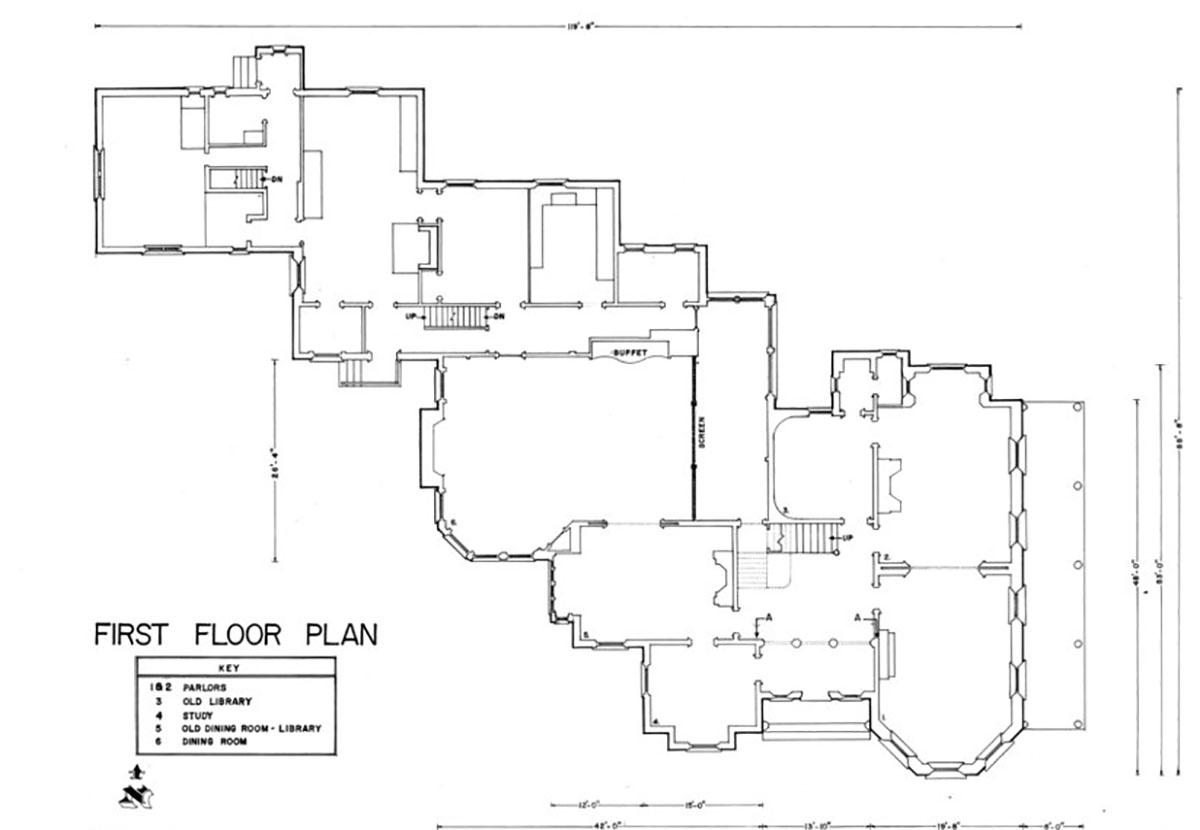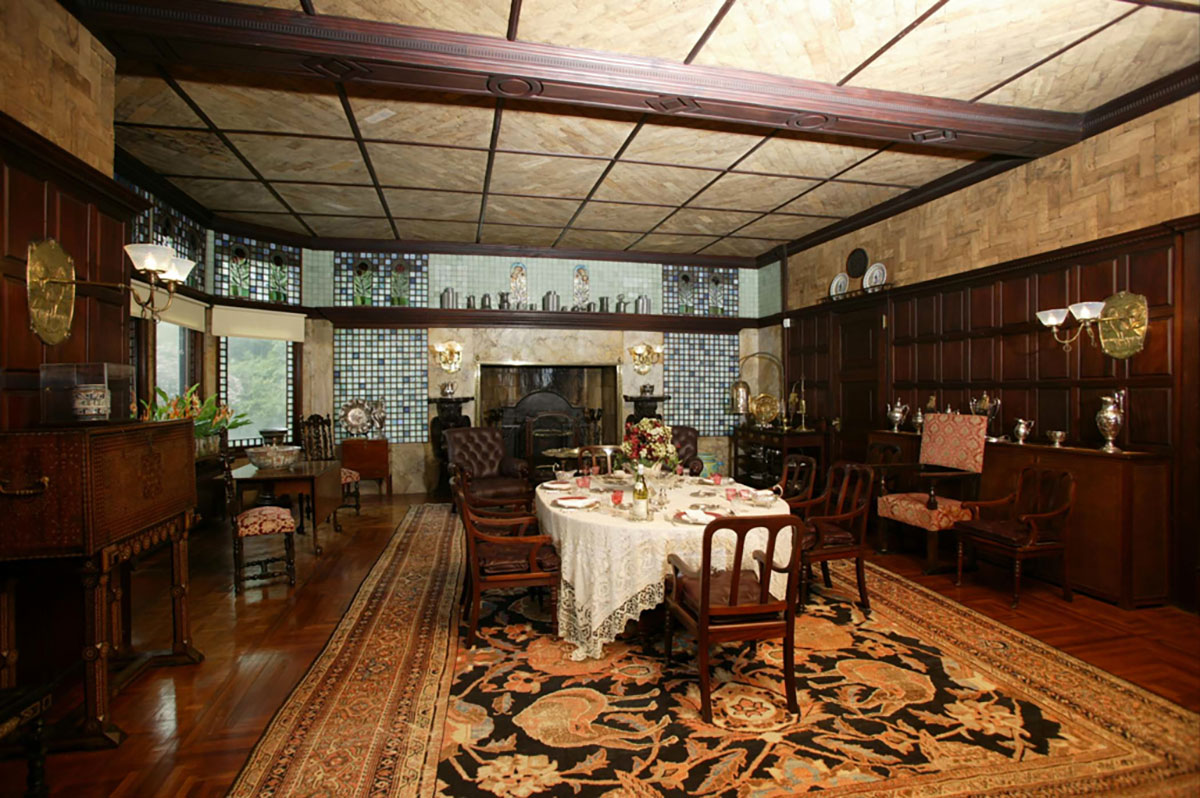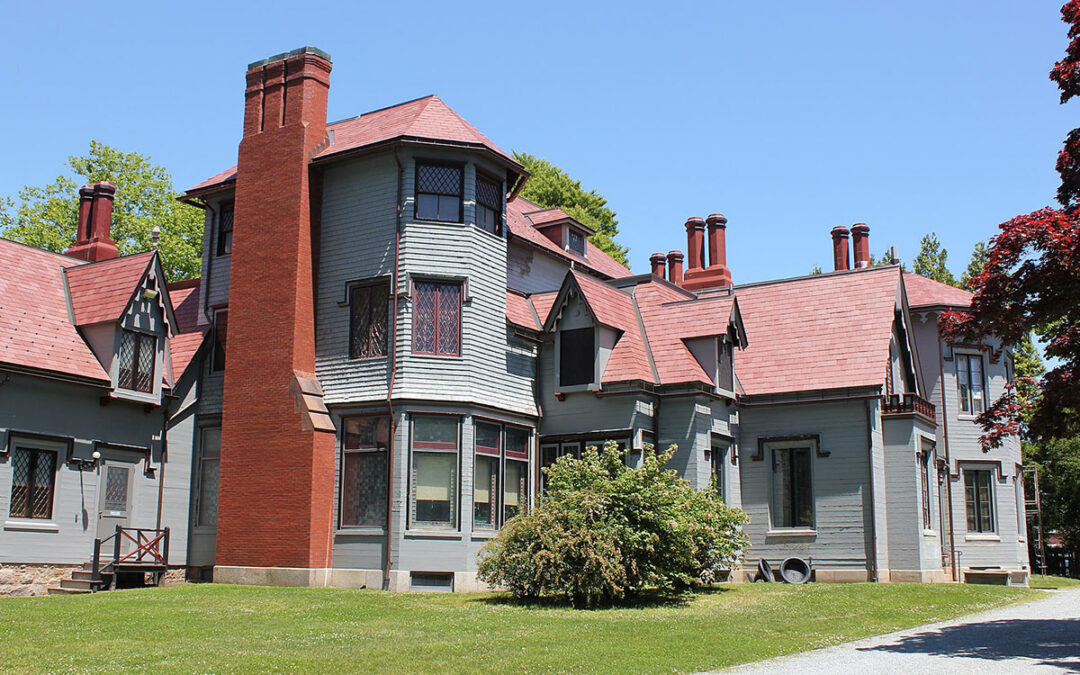A4 Architectural Spotlight: Kingscote Mansion
In Newport, houses were frequently built at one moment in time and then modified and expanded later. As a result, their histories can mirror that of the city itself and of broader architectural evolution as well. One such example of this phenomenon is the George Noble Jones House, which was designed in 1839 by architect Richard Upjohn for George Noble Jones, a wealthy southern plantation owner. The house is a classic example of the Gothic Revival style, with its pointed arches, turrets, and stained-glass windows.

Kingscote – Original Plan
Jones bought the property in the late 1830s, when the area was still mostly pastureland. Bellevue Avenue, where the house is located, was then called South Touro Road and was little more than a dirt path. There was only one other neighbor, a farmer named John Champlin. Jones commissioned Upjohn to design a summer home that would be both comfortable and stylish. A watercolor rendering of that period by Upjohn shows the house sitting in what looks to be open farmland, which is quite the contrast to its current condition in the heart of Newport.
Upjohn’s design was inspired by English Gothic cottages, but also incorporated elements of American architecture, such as the use of native wood and the inclusion of a large central stair hall. The house is made of wood frame construction with wood siding, coated with paint containing sand so it looks like masonry. Its exterior is decorated with pointed arches, turrets, and stained-glass windows. The interior is spacious and well-proportioned, with high ceilings and large windows, but organized in a labyrinthine plan.
The house was completed in 1842, and Jones and his family moved in the following year. They spent summers at Kingscote until the beginning of the Civil War, when Jones returned to his plantation in South Carolina. In 1864, Jones sold the house to David King, Jr., a wealthy industrialist from New York, and the home was renamed “Kingscote” and soon after he engaged noted Newport architect George Champlin Mason to undertake an expansion of the house. In 1880, the Kings continued to make changes to the house, including the addition of a new dining room and service wing and they hired Stanford White of McKim, Mead & White to design this major addition. Rather than adding the large addition to one side or the other, White cleverly cut the house in half pulled it apart diagonally, and added the new construction in the middle thereby maintaining the character, balance and proportionality of the original building. In 1893, Dudley Newton, another Newport architect, was commissioned to design the carriage house on the property.

Kingscote – Addition Plan
Members of the King family continued to live in Kingscote until 1972, when the family donated the house and all its contents to the Preservation Society of Newport County, making it one of the most exceptionally well preserved and complete examples of Gilded Age, Victorian architecture and furnishing. It became a National Historic Landmark in 1996 and joined the pantheon of individually listed buildings as one of the most architecturally significant houses in the country in that it was the product of four noteworthy architects and was among the first “summer cottages” to be built in Newport.
The Preservation Society has restored Kingscote to its original condition, and it is now open to the public for tours during the summer months and has become a popular tourist destination. It is widely considered one of the most important examples of Gothic Revival architecture in the United States. In addition to its architectural significance, Kingscote is also historically significant. It was home to two influential families, the Joneses and the Kings. During its occupation, the house was also a summer retreat for many prominent guests, including Ulysses S. Grant, Henry Wadsworth Longfellow, and William Tecumseh Sherman.

Kingscote – Dining Room
Kingscote is a beautiful and historic house that is well worth a visit. It is a reminder of the city’s Gilded Age past, and it is a testament to the skill and artistry of Richard Upjohn and the other Newport architects that followed him in working on the structure. From the pre-Gilded age era, when Newport was a haven for southern plantation owners, through the early Gilded Age, when Bellevue Avenue was first being expanding in grandeur, to the present day, where historic houses like it have become a primary economic driver for the city, Kingscote’s design, construction and use embodies and reveals this architectural and social evolution.
Ross Cann, RA, AIA, LEED AP, is an author, historian, and practicing architect living and working in Newport, RI. He holds degrees with honor in Architecture from Yale, Cambridge, and Columbia Universities.
Kingscote is a National Historic Landmark and a valuable part of Newport’s cultural heritage. It is a reminder of the city’s Gilded Age past, and it is a testament to the skill and artistry of Richard Upjohn. The house is a beautiful and inspiring example of Gothic Revival architecture, and it is a must-see for any visitor to Newport.
Here are some additional facts about the George Noble Jones House:
- The house is 25,000 square feet and has 18 rooms.
- The exterior is made of wood frame construction with clapboard siding.
- The interior is decorated with pointed arches, turrets, and stained-glass windows.
- The house has a central hall, a library, a dining room, a music room, and a ballroom.
- There is also a carriage house and a greenhouse on the property.
- The house was added to the National Register of Historic Places in 1972.
- It is now owned and operated by the Preservation Society of Newport County.
